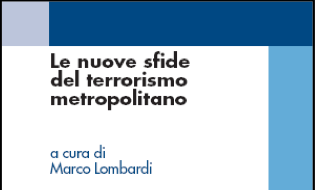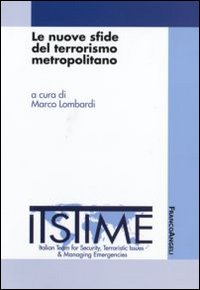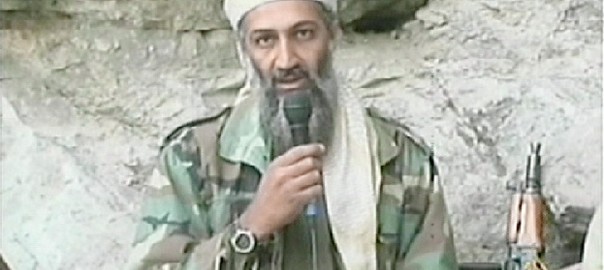Il primo volume di ITSTIME è in libreria. Il terrorismo urbano sembra essere una delle sfide più complesse da affrontare per la sicurezza nazionale. New York, Madrid e Londra restano impresse nella nostra memoria quali grandi città occidentali recentemente oggetto di attacchi terroristici e la scena mediatica degli ultimi decenni ci presenta oramai quotidianamente immagini di metropoli “a rischio”. Questo volume si propone di analizzare il fenomeno in termini di minaccia concreta e di possibile risposta da parte sia dei cittadini sia delle autorità competenti. Gli autori, attraverso approcci che vanno dalla sociologia alla psicologia, dal crisis management alla criminologia, si interrogano sulle pratiche apprese e sulle forme assunte dal terrorismo di matrice islamica. Delineando le minacce agli agglomerati urbani contemporanei, i contributi offrono spunti di riflessione che, oltre a inserirsi nel dibattito accademico, definiscono nuovi approcci strategici di intervento.
LINK : Terrorismo metropolitano


 ella nostra memoria quali grandi città occidentali recentemente oggetto di attacchi terroristici e la scena mediatica degli ultimi decenni ci presenta oramai quotidianamente immagini di metropoli “a rischio”. Questo volume si propone di analizzare il fenomeno in termini di minaccia concreta e di possibile risposta da parte sia dei cittadini sia delle autorità competenti. Gli autori, attraverso approcci che vanno dalla sociologia alla psicologia, dal crisis management alla criminologia, si interrogano sulle pratiche apprese e sulle forme assunte dal terrorismo di matrice islamica. Delineando le minacce agli agglomerati urbani contemporanei, i contributi offrono spunti di riflessione che, oltre a inserirsi nel dibattito accademico, definiscono nuovi approcci strategici di intervento.
ella nostra memoria quali grandi città occidentali recentemente oggetto di attacchi terroristici e la scena mediatica degli ultimi decenni ci presenta oramai quotidianamente immagini di metropoli “a rischio”. Questo volume si propone di analizzare il fenomeno in termini di minaccia concreta e di possibile risposta da parte sia dei cittadini sia delle autorità competenti. Gli autori, attraverso approcci che vanno dalla sociologia alla psicologia, dal crisis management alla criminologia, si interrogano sulle pratiche apprese e sulle forme assunte dal terrorismo di matrice islamica. Delineando le minacce agli agglomerati urbani contemporanei, i contributi offrono spunti di riflessione che, oltre a inserirsi nel dibattito accademico, definiscono nuovi approcci strategici di intervento.


